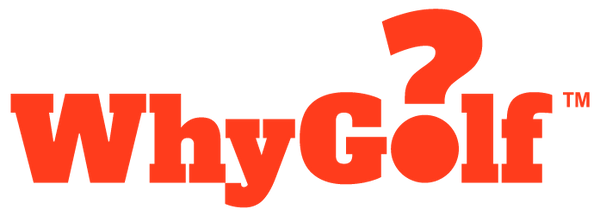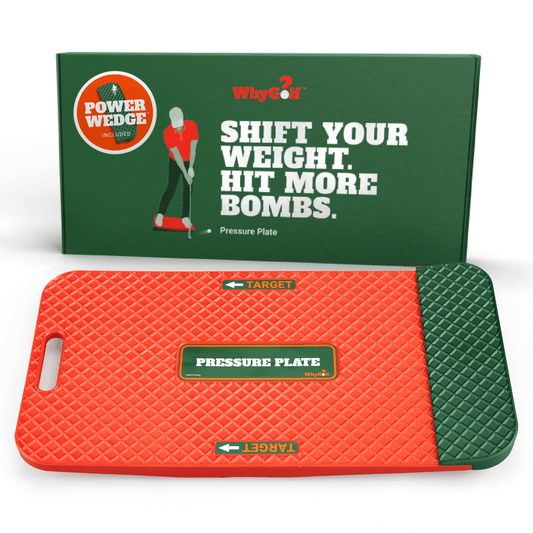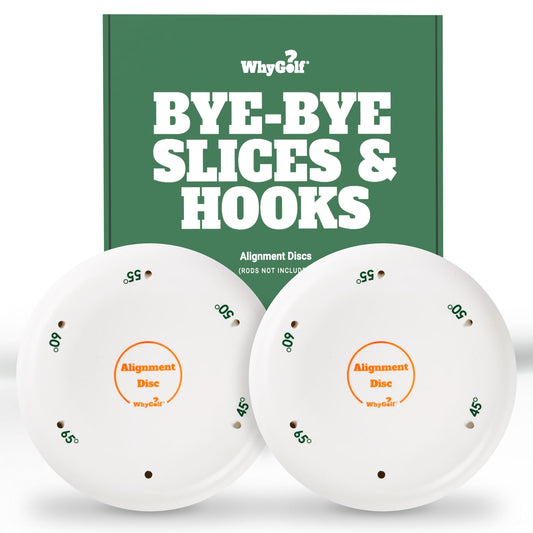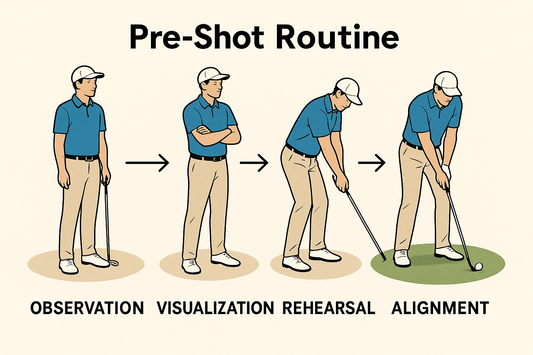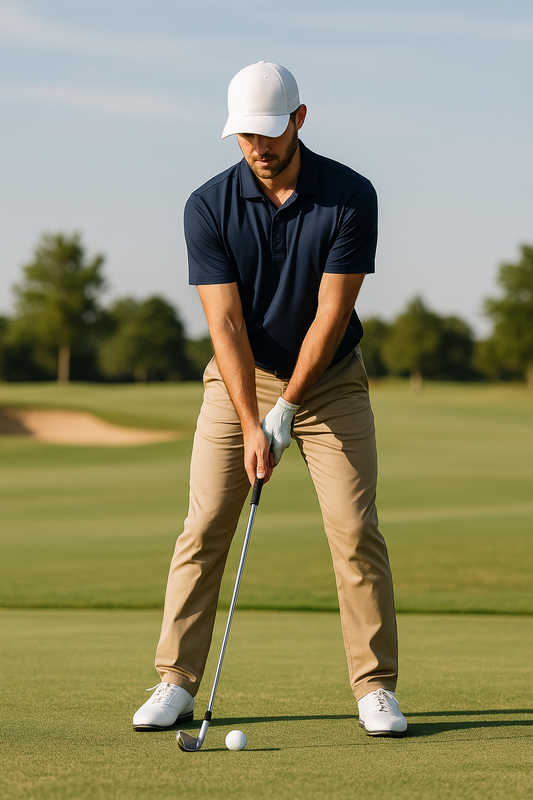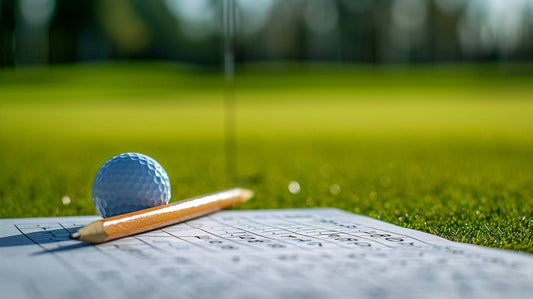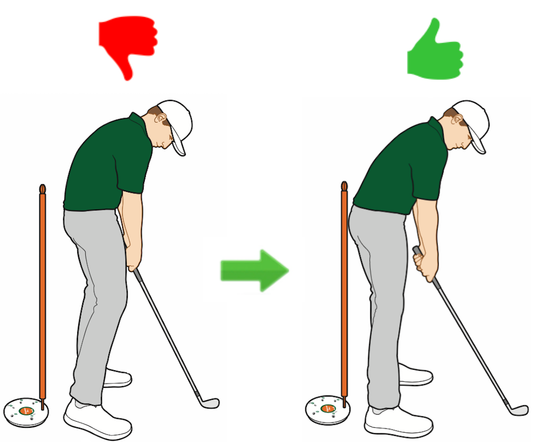Author: WhyGolf WhysGuy
We want to preface this guide with the acknowledgment that neither WhysGuy nor anyone from the WhyGolf team claims to know everything about the golf swing. We don’t want anyone to treat what we say here as gospel. While much of what we’ll say is a reflection of decades of dialogue with PGA instructors and players, we’re always learning and we understand that knowledge about the sport of golf will continue to evolve over time.
1. You Can't Stop Slicing and Hooking It
Many golfers, upon realizing that they have no idea why their golf ball veers wildly offline, make the quick decision to change their swing before considering that their ball position may be the problem. This point is critical.
Your ball position impacts the point at which the clubhead makes contact with the golf ball. Ball position also will impact the clubface angle of your club at impact. Forward ball position = face angle will be farther left. Back ball position = face angle will be farther right (for right-handers). To explain further, here's an extreme example:
Imagine you're in your golf posture, but we force you to have your ball position two feet in front of your left heel at address. You're aligned down the middle of the range, and we request that you to try to start the ball to the right of your target and get the ball to slice (assuming you're right-handed).
It would be virtually impossible! By the time your clubhead hits the golf ball, it would be so far in your through-swing that your club's face angle would be aimed miles left.
We hope we've shown why and how ball position affects your club's face angle at impact and the resulting shot shape.
2. You're Hitting it Shorter than Usual
If your ball position is too far forward or too far back in your stance, it's likely your ball flight will not be optimized for distance. Even if you make solid contact with the ball, your spin rates may be too high. With your driver, we recommend starting with your ball position just inside your left heel. This will ensure that you're hitting up on the ball slightly and thus optimize your launch trajectory.
3. You're Chunking or Thinning the Ball Over and Over Again
Fat or thin shots can also be a result of improper ball positon.
Why?
If the ball is placed too far forward, the club may strike the ground before the ball, resulting in a fat shot. If the ball is too far back, the club may strike the ball first, resulting in a thin shot. This is because your ball is moving positions relative to the low point of your swing. The farther forward in your stance, the more level or up your angle attack will be. The farther back in your stance, the steeper your angle of attack will be. Don't be afraid to mess around with your ball position to find what works for you.
4. You're Hitting It Super High
As we discussed in point 3, ball position affects your angle of attack. If your ball position is too far forward, your angle of attack will likely be positive (ascending) and you will thus be adding loft to your club at impact, which will often result in a high, spinning shot. Before you consider making other changes to your golf swing, we recommend you move your ball position back a couple of inches if you find yourself hitting it really high.
Fix My Ball Position: Case Scenarios
Stop My Pull Hooks
- Finding yourself hitting pull hooks? It's possible your ball position is way too far forward in your stance.
- As we discussed earlier in this article, a forward ball position will generally cause your club's face angle to be pointed left at impact (for right-handers)
- If you move your ball position closer to the middle of your stance, your ball will likely begin starting out on line.
- Note: Since your ball was initially hooking, the downside to moving your ball position back is that your swing path may now be even farther to the right. Consider aiming your shoulders and feet a little left at setup to counteract this.
Can't Shake the Push Slices?
- Stuck hitting push slices? It's possible your ball position is too far back in your stance.
- If your ball position is too far back, your swing path will likely be stuck behind and too far from the inside.
- Consider moving your ball position more forward in your stance.
- Note: Since your ball was initially slicing, the downside to moving your ball position forward is that your swing path may now be even farther to the left. Consider aiming your shoulders and feet a little to the right at setup to counteract this.
Ball Position - Key Takeaways:
- Proper ball position placement is critical to achieving consistent ball striking.
- Before you make serious swing changes, consider moving your ball position forward or back and seeing if that cures your ball flight woes.
- If you change your ball position and still don't have any luck, the WhyGolf Alignment Disc can be a useful tool to help you feel and make changes to your swing path effectively.
Ready to make an investment in your golf swing? Learn more about how the Alignment Disc can help you with your swing plane here.
What is ball position in golf?
The location of the golf ball in relation to the player's stance is referred to as the ball position in golf. It can influence the shot's trajectory and distance, as well as the direction of the ball's spin. The ball position can be changed for various shots, such as a driver, iron, or putt. A common default ball position for a driver is just forward of center in the stance, for a mid iron is in the center of the stance and for a short iron or a wedge is just behind the center of the stance.
How do I hit a draw?
We made an article on this. Click here.
How do I hit a fade?
We made an article on this. Click here.
Where should my ball position be with my irons?
Ball position with irons should vary depending on the iron shot and the player's personal preference. In general, the ball should be placed near the center of the stance, between the front and back foot, for mid- to short-iron shots. This gives the golfer complete control and accuracy. Longer irons, such as 3- or 4-irons, can have the ball positioned slightly forward in the stance, towards the front foot, for a higher launch and longer carry. As a golfer's swing and shot-making abilities improve, he or she may experiment with different ball positions. The key is to find a ball position that produces the desired shot shape and trajectory on a consistent basis.
Where should my ball position be when putting?
When putting, a golfer should generally determine which ball position feels optimal, as it's highly individual. This will often be a reflection of whether a golf is left or right-eye dominant. A left eye-dominant golfer will generally feel more comfortable with their ball position slightly forward of center, and a right-eye dominant player will generally find that they're more comfortable hitting putts with the ball slightly back of center in their stance. Most players will find that they putt best when their eyes are parallel with their line to the hole. Finally, ball position while putting is a matter of personal preference, which can be modified based on individual technique and what produces the best results for each golfer.
Where should my ball position be with driver?
With a driver, the ball should be at a minimum slightly forward of the center of your stance. Most players will have the ball played off their left heel with driver. This gives you the most power and range on your shots. However, every golfer is unique, and it's critical to experiment and practice to find the ball position that works best for you.
Is a draw or fade better?
If you were a true WhyGolf fan, you'd already have known that we have a post on Draws vs. Fades where we compare and contrast the two ball flights. Just kidding. But seriously, go read that article.
Where should my ball position be when chipping?
When chipping, the ball is usually centered in the stance or slightly back towards the back foot. This placement encourages a descending blow and reduces the possibility of hitting the ground before the ball. Finally, ball position when chipping will typically be a reflection of what the golfer is trying to do with their golf ball around the green. If they're trying to hit a higher shot that lands softly, they'll find it easier to accomplish this with their ball position forward of center. If they're trying to hit a bump and run type chip, this will be easier to accomplish with ball position closer to their trail foot. Ultimately, like putting, ball position when chipping is a matter of personal preference that can be adjusted based on individual technique and what produces the best results for each golfer.
How does ball position affect swing path?
The position of the ball has a significant impact on the swing path. If the ball extremely forward in the stance, the golfer will swing too much from outside, often resulting in a left swing path (for right-handers) and an extremely closed clubface. A ball that is too far back in the stance, on the other hand, can cause the golfer to swing too much from the inside, resulting in a path that is very steep and prone to pushing the ball to the right.
To achieve a desirable swing path, the correct ball position must be determined based on the type of shot being played, the type of club being used, and individual preferences. A more neutral swing path that is less prone to directional issues can be promoted by a centered ball position. Overall, finding a ball position that allows the golfer to maintain proper posture and spine angle throughout the swing, as well as generate a smooth, consistent path that results in the desired shot shape and trajectory, is critical.
Check Out Our YouTube Channel For Drills and Tips

